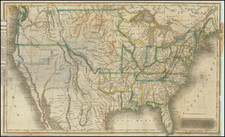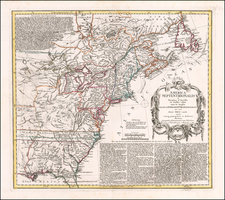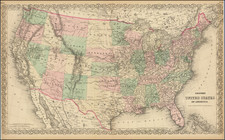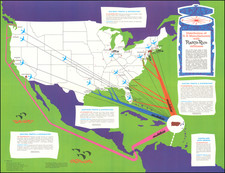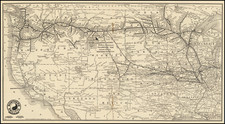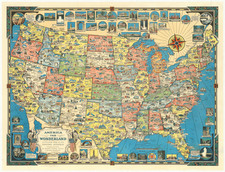Scarce map of focusing on the Indian Tribes of North America at the outset of the American Revolution, from Adair's The History of the American Indians, published in 1775.
One of the most interesting features of this map is Adair's efforts to meticulously list the Indian Tribes of the Southeastern British Colonies and to provide accurate names for the tribes and places in the native languages. As such, in addition to the usual tribal names (Choktah, Muskohge, Katahba, Chikkasah, Nahchee, Cheerake, etc.), there are a number of interesting names, including:
- Ishtatohe
- Quansheto
- Chakchooma
- Tuk-ke-bat-che
- Yowana
- Ok-chai
- Tal-la-se
- Kow-he-tah
- Ok-whus-ke
Several early American Forts are also located, including:
- Fort Moore (South Carolina--established 1715, abandoned by 1765)
- Fort Conde (Mobile, Alabama--constructed by the French in 1723, renamed Fort Charlotte in 1763 by the English and Fort Carlota in 1780 by the Spanish)
- Fort Tumbikbe- (Sumter County, Alabama-Fort Tombecbe was built in 1736 by the French, renamed Fort York in 1763 by the English and thereafter abandoned prior to 1793, when the Spanish constructed Fort Confederacion on the same site.
- Fort Toulouse-(Wetumpka, Alabama. Built by the French in 1717. Abandoned after the Treaty of 1763 and never occupied by the English, although used as an encampment site by Andrew Jackson during the War of 1812).
James Adair was a fur trader and frontiersman, who spent nearly 30 years living among the Southern Indians of North America. Adair was one of the first white settlers to explore the Alleghenies, and because he lived among the Indians, his observations of the characteristics of the Southern Indians was of great value and generally considered the most important contemporary work on this topic. The map "illustrates a Southeast with the Indians safely tucked away in the interior wilderness, exactly the condition Adair's readers would have approved of" (Cumming & De Vorsey).
Adair's book has been described as the best 18th century English source on the Southern tribes, written by one of the most colorful figures in Southern colonial history.
From 1735 until 1759, Adair traded with the Catawba, Cherokee and Chickasaw, and each of these major tribes is represented by a chapter in this work. An ample portion of Adair's History is devoted to his attempt to prove the descent of the Indians from the lost tribes of Israel.









